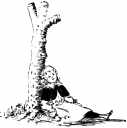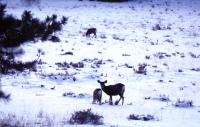 |
A Selection Of
Cazadero's Native Flora And Fauna This page last updated March 1, 2004 (Forest fire data) (Right photo of Orchid-like Calypso wild flower) Photographer: Gerald and Buff Corsi Organization: California Academy of Sciences |
|
NATIVE TREES
Coastal Redwood
MAMMALS
CAZ COON Pacific Coast Black Tail Deer
REPTILES 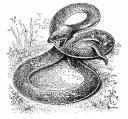 Western Rattle Snake
ENDANGERED OR THREATENED SPECIES
California Freshwater Shrimp
(Syncaris pacifica):  The nearly transparent shrimp are found in East Austin Creek. Big Austin Creek is good habitat, but no shrimp count is available from Calif. Dept. of Fish and Game.
TAKE AUSTIN CREEK'S SUMMER DAM POLL/VOTE (Read the Freshwater shrimp article above) Northern Spotted Owls?
There have been siteings. Contrary to public & media hype, the Spotted Owl (Strix occidentalis caurina) is not confined to "old growth" redwood forests. Their best habitat is in forests that have multispecies multilayered trees with about an 80% canopy. The best forest habitat includes fallen trees, broken top trees, trees with trunk cavities, oaks with mistletoe infections and forest floors with decaying deadfall. One reason for their apparent species decline is that they are mating with the eastern Barred Owl. CONTRIBUTIONS?
Do you have stories, observations or environmental concerns? E-mail me or use my home page Guest Book Comments link.  FEEDBACK:
Q. Beaches on Ward and Austin Creeks are being advertised on the Internet and the people that use the sites are leaving refuse behind. What can be done about it?
Note: The state of California claims ownership of all water in "Blue Line" streams (streams marked in blue on Topo. maps) and land owners are by law to keep their stream beds clear of refuse, etc.
|
-
Axing For Help
June 1920 George Montgomery's wife, Carrie, wrote a letter to R. G. Sproul of the Save The Redwoods League in Berkeley requesting help in preserving the redwood trees she and her husband owned in Elim Grove. The response was, "We believe we are not mistaken in assuming that as long as you own them they will not be cut." The property was in Carrie's name. Were there $$ troubles in the Montgomery household?
FERNS
Calif. Maiden Hair
Cazadero's Forest
#1 Environmental Issue?
BIRDS
Caz Quail Bald Eagle - Sighted 1978,'79,'02
* Ruffed Grouse are disappearing from Cazadero's forest. Feral pigs and Coyotes have been eating their eggs. A significant decline was noticed in the mid 1970s when the pig population was at its height. Edward and Annie Broz began their Cazadero Broz resort in the early 1930s. In 1949 Annie said, "When we came up on the train, my husband was riding on the back of the train platform. He got so excited over the beautiful scenery that he lost his balance and fell from the moving train (near Elim Grove). The train stopped for him, but he decided right then and there he wanted to stay."
Millers Retreat (1906-1949) had an open air dining hall that had no rear wall. The dirt bank behind the structure sloped to the dining area and offered the patrons a magnificent view of the natural ferns that grew there. A fire consumed the dining hall in 1949. Millers Retreat's lodging building was torn down in the early 1950s (rotted foundation) & was located at the present site of St. Colman Church's outdoor services amphitheater. ** The St. Coleman (sic) carved wooden sign there is misspelled **
The California Redwoods - Coastal Redwood (Sequoia semperviren) & the Sierra Giant Sequoia (Sequoia gigantea) - are the tallest and largest living organisms in the world. The Humboldt Co. "Founders Tree" Coastal Redwood is the tallest (364 Ft.). The Sierra's "General Sherman" tree is the largest (274.9 Ft. tall; 102.6 Ft.circumference at the tree's base). For the timber cruiser, that's 52,500 Cubic ft. Both tree species are adopted as the California State Tree.
STUDY LINKS Visit Austin Creek State Recreational Area to do independent study on Cazadero's Flora & Fauna - Click on the ACSR link to learn how and where. For interactive plant identification photos link to Plant photographs. |
SHRUBS
Raspberry
WILD FLOWERS
This is a list of the more delicate or colorful flowers found in the region: Buff Pea
Wednesday March 12, 1884
Tom Trosper (age 58) and his son Ernie (age 26) "killed" a 16 pound salmon in Austin Creek at its confluence with Bearpen Creek. They waded into the creek and speared it.
BEARPEN CREEK was originally known as Bear Trap Creek for pen enclosures that Tom Trosper used to capture Brown Bears during the years 1866-1876. Tom was badly mauled by a bear in 1867 on the current Rodgers' Ranch. His hunting partner from San Francisco dropped his rifle and climbed a tree to get out of harm's way. Tom's dog "Trash" came to the rescue and saved his life. Wotta Dog! Wotta hunting partner?
Exam: Approximately, how old was Tom Trosper when he was mauled by a bear? (clue, see salmon article above) Answer found on this page.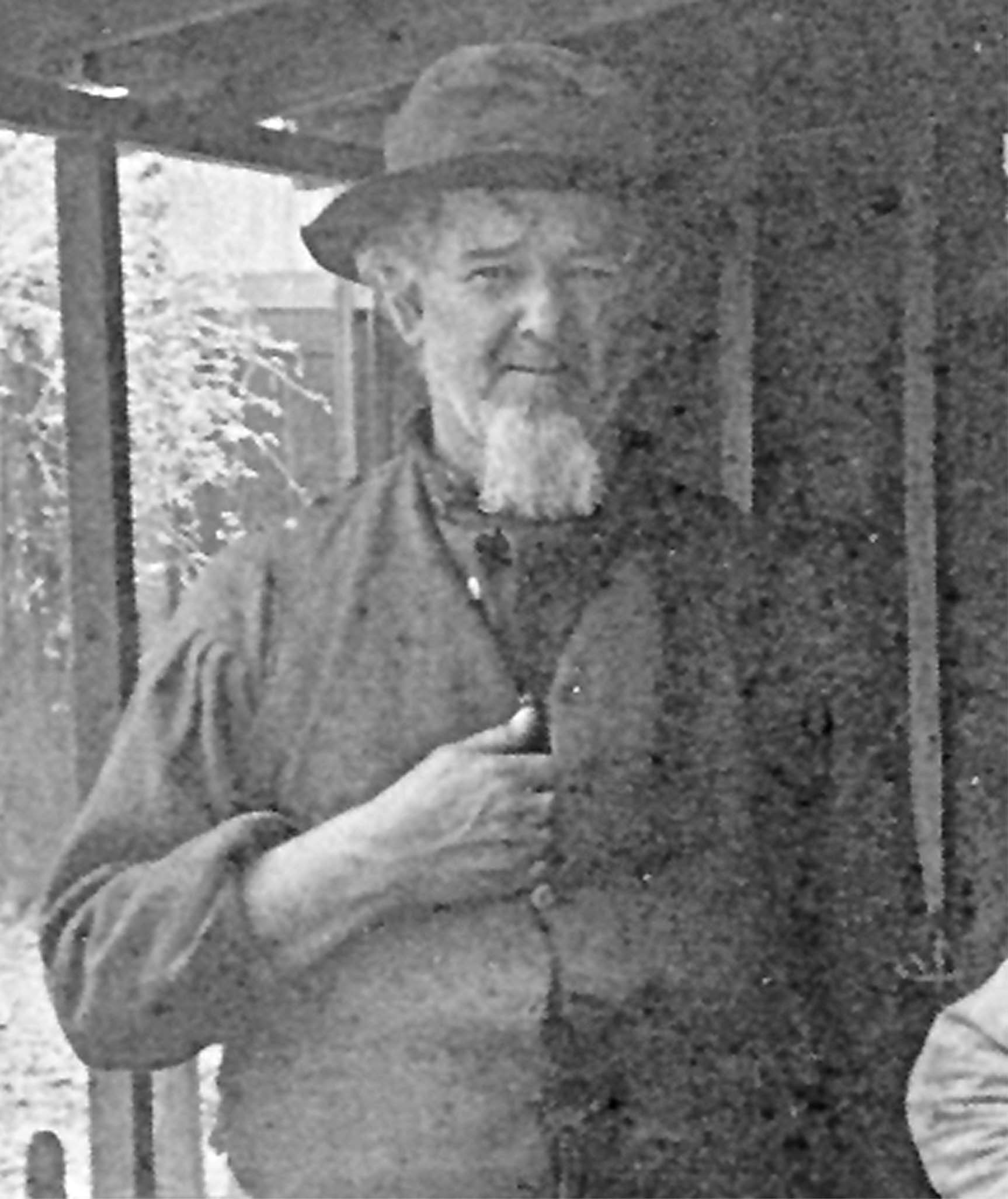 Tom Trosper at his Bearpen Creek home in 1892 Tom's genealogy link Tom's family tree link. Otters
North American River Otters have been sighted in Austin Creek in the recent past. They were fairly abundant in the 1800s. There is no evidence that the Aleut hunters at Fort Ross (1812-1841) trapped Austin Creek, but the otters were taken by Anglo trappers in the mid 1800s.
PREVENT FOREST FIRES
CVFD was established in 1948 after Al Maher's Quonset hut style Elim Grove Restaurant burned to the ground. Cazadero VFD'S first fire truck - Engine No. 811 (1948). 1942 War Surplus 4WD with 350 gal. water tank. Hoses outfitted with fog & high pressure stream nozzles. Jack Barry was Cazadero Volunteer Fire Department's first Fire Chief (1948-1950).
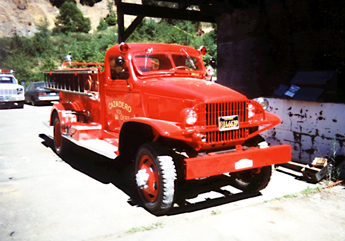
Charles Fire July 28, 1954 Started from bulldozer welding on Charles Ranch near Niestrath Rd. & burned to Russian gulch on the coast - 10,000 acres. The fire also destroyed the Aho ranch house and the Creighton Ridge school house. Watson Gulch Fire Sept 1, 1961. Arson fire Started in Watson Gulch near Guerneville and burned to Austin Creek at its confluence with Russian River and to within 1/2 mile of Boy Scout's Camp Royaneh - 5769 acres. Magic Mountain Fire September 1965. Down PG&E Electric wires began fire in the Magic Mountain subdivision. It burned to near Jenner and then reversed to threaten the Cazanoma Lodge on Kidd Creek. Heavy fog moved in on 4th day to lay it down. About 7,125 acres burned. Creighton Ridge Fire August 9, 1978. Lawn mower sparked fire originated on Creighton Ridge and followed much the same western course as the 1954 Charles Fire. Its eastern advance stopped near Dugans Pond on Mohrhardt Ridge - 12,000 acres.
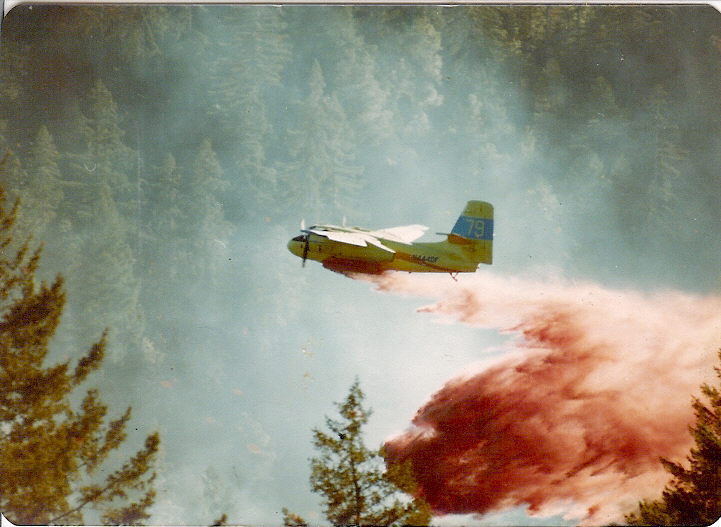 POLE MOUNTAIN FIRE LOOKOUT Lookout tower link. BONUS PAGE |
| This page continually being added to, revised & updated.
Exam answer: Tom was about 41 years old. Tom's genealogy link. |
